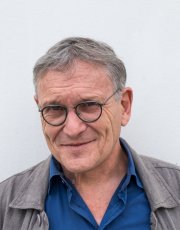
Zones to Protect
Rony Brauman
Mao Tse-Tung said, “the guerrilla must move amongst the people as a fish swims in the sea.” Blending in with and feeding off the population to better attack the enemy by surprise, organising the people politically and hiding amongst them to escape enemy counter-attacks are the basis of revolutionary warfare. With very few exceptions, armed insurrections inspired by Maoist theories on the seizing of power through force are a thing of the past; even so, these insurrections continue to apply the same tactics. National military have likewise long integrated this strategy into their counterinsurgency methods: empty the fish bowl to asphyxiate the fish. All “asymmetrical” armed conflicts, those that pit irregular forces against those of the state, take this approach.
The Geneva Convention, which provides the legal framework for warfare, is founded in particular on the principle of differentiating between combatants and non-combatants, out of respect for the lives of those who are not participating in the conflict or those who have been removed from the conflict (civilians, wounded, prisoners). The obligation of combatants to be visible and identifiable as such stems from the principle that the uniform designates legitimate targets in the eyes of humanitarian law. This principle no longer applies however, as combatants are no longer required to distinguish themselves from civilians at all times since the additional protocols to the Geneva Convention were adopted in 1977See Véronique Harouel-Bureloup, Traité de droit humanitaire, PUF, 2005, p. 300 et seq.. To take into account the reality of 20th century conflicts, a special statute was required for guerrillas who are concealed within the civilian population but benefit from humanitarian provisions in the event of capture. The clouding of this distinction, fundamental to humanitarian law, did not escape the Red Cross’ legal experts who therefore chose to adapt the laws of war to the reality of war, as the contrary is simply not possible.
Thus, the notion of a “human shield” is particularly difficult to define and is subject to endless interpretations. Reprisals against civilians are forbidden, as is using civilians as shields to prevent attacks on strategic points and areas or retaliation. At what point can a guerrilla force that is integrated into the local population be accused of using it as a human shield? And conversely, how can an army distinguish the indistinguishable?
Although it is impossible, by definition, to sanctuarize a territory that is at stake in a conflict, it is possible to declare certain specific places within this territory as protected areas, such as hospitals, schools or civilian shelters. Be it in Darfur or Gaza, in Sri Lanka or Somalia, the humanitarian sanctuarization of specific places would hardly change the course of war, nor would it affect its outcome in the least, and indeed it should not be expected to do so. But with severe punishment for violating such sanctuaries, clearer limits would be established. The will to enact legislation on mass violence in general, a tendency of the International Criminal Court, risks rendering all violence equal and losing all grasp of reality. Humanitarian law was designed as a normative framework, not as an indictment. Reversing this trend by limiting punishable war crimes would restore to it the power it desperately needs. Any use of human shields as described above and any strike against a “humanitarian sanctuary”, regardless of the motives, would lead to criminal prosecution of the combatants involved, be they soldiers or guerrillas. The obvious fact remains that it is not the law and its provisions, but the political process and compromise that can defeat the abomination of war.
To cite this content :
Rony Brauman, “Zones to Protect”, 1 mars 2009, URL : https://msf-crash.org/en/rights-and-justice/zones-protect
If you would like to comment on this article, you can find us on social media or contact us here:
Contribute
